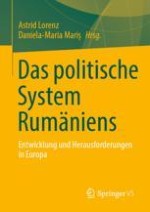2022 | OriginalPaper | Buchkapitel
Challenge and Response of Regional Disparities: Romania in a Comparative Perspective
verfasst von : Dumitru Sandu
Erschienen in: Das politische System Rumäniens
Verlag: Springer Fachmedien Wiesbaden
Aktivieren Sie unsere intelligente Suche, um passende Fachinhalte oder Patente zu finden.
Wählen Sie Textabschnitte aus um mit Künstlicher Intelligenz passenden Patente zu finden. powered by
Markieren Sie Textabschnitte, um KI-gestützt weitere passende Inhalte zu finden. powered by
